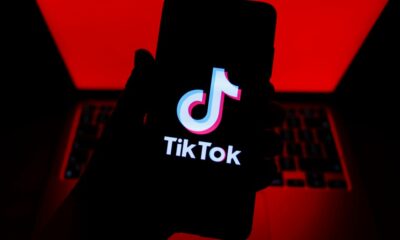International Day of the Girl: How digital sex-ed in India and Asia Pacific is ending taboos around sex – and how censorship risks taking it all away

She told CNN that her biology teacher in her home village in the southern Indian state of Kerala had spoken to the class about sexual intercourse just once and she didn’t recall learning much from that. So, when she found herself uncomfortable with her sexual encounters with her husband, she struggled to explain why or name what had been happening to her.
”I didn’t know about marital rape back then. I didn’t know even the term existed,” the now 32-year-old said, explaining that her husband never sought consent, nor did she realize at the time how much it might have changed her experience if he had.
Still, Manomi — whose name has been changed due to possible backlash for speaking out — was so unhappy that she says her mother “took the initiative” to help her daughter file for divorce, just three months after her wedding.
The young woman moved to the state capital and became an urban designer, but it would be years before she learned, through the social media posts of online sexual health educator Leeza Mangaldas, that sex should be “consensual, safe and pleasurable.” These “three things Leeza repeats everywhere,” Manomi said.
For Leeza Mangaldas’s 2.5 million followers across Instagram, YouTube and Facebook, she is a source of accessible and empowering information on sexual health and wellbeing — a subject that remains largely taboo across India and most of the Asia-Pacific region. According to the educator’s own analytics, 65% of her followers on Instagram are men and women between the ages of 18 and 34.
But Mangaldas’ ability to share information that her audiences tell her is useful, and which they say they are unable get elsewhere, is being hampered by changes to how social media platforms are moderated, she told CNN.
Mangaldas told CNN she earns her living from paid partnerships with corporations and international non-profit organizations on her social media platforms, as well as from a recently founded sexual wellbeing brand. She began posting on YouTube in 2017, just as India’s #Metoo movement was starting and ahead of the Supreme Court’s decision the following year to decriminalize homosexuality, she said.
”I feel like I was one of several people at that time who were frustrated by this state of affairs when it comes to sexual and reproductive health and rights. And what I was doing on social media connected with a lot of people,” Mangaldas said. “There was definitely a desire for change.”
However, CNN spoke to nine content creators and sexual health experts in South and Southeast Asia who are raising the alarm, warning that their educational content is being increasingly censored.
Among the creators CNN spoke to, eight shared multiple examples of content being restricted or taken down and of being unable to run ads on some sex-ed posts.
Caught in the crosshairs of the platforms’ attempts to address the proliferation of harmful content around sex, educators’ posts are being pushed behind sensitivity filters and inaccurately considered to be pornographic material, according to the content creators. CNN spoke with six young people across the region who are largely deprived of formal sex education, who told CNN that they are afraid of making ill-informed decisions about their sexuality, sexual practices or how to protect themselves in abusive sexual situations because of this censorship.
Mangaldas and other digital sex educators are calling for improved content moderation, transparency, and more direct communication from the social media platforms on how they are applying their policies. “We can work together instead of against each other,” she said.
Pressured to change ‘sensitive content’
The sex-ed influencers, experts from social change organizations and non-profits CNN spoke to accused social media platforms of arbitrary and inconsistent crackdowns which have pressured them into self-censoring, resulting in them deleting posts and, for example, avoiding references to human genitals.
Mangaldas believes the regulatory processes used by platforms are unable to distinguish accurately between nudity, sexual solicitation, pornography, art, and educational content. “So even when you are not actually violating their guidelines, often content gets wrongly flagged,” she told CNN.
Mangaldas said she started to notice more censorship in content moderation on Instagram, where she is the most active, when the platform introduced Sensitive Content Control in 2021.
The sensitivity feature is an embedded function which allows users to filter potentially upsetting content such as posts that may be “sexually suggestive or violent” in their Explore tab which shows recommendations from accounts users do not follow. Users over the age of 18 are able to manually tailor and broaden the amount of ”sensitive content” they wish to see.
In late July, Mangaldas received a notification from Instagram saying her account couldn’t “be shown to non-followers”, leading her to delete nine posts that had been flagged to be ”eligible for recommendation” again. Being restricted from reaching non-followers is also known as a shadow ban. The deleted posts include a video in which she talks about using lubricant and another explaining why some people cry after sex.
She told CNN that after this experience, she began to censor herself more, for example spelling the word ”porn” using a mix of Hindi and English when talking about false expectations about sex and noticed a huge uptick in reach to followers and non-followers.
She also gave the example of a cropped image from a piece of 19th century French art showing a nude bottom that she originally posted in 2020 but reused this year. The new post was blocked, Mangaldas said, though Meta’s policy states that nudity in photos of “paintings, sculptures, and other art that depicts nude figures” is acceptable. The older post is still visible.
Online healthcare network Women First Digital (WFD)’s director, Tisha Gopalakrishnan, also spoke of ”rampant” censorship on her organization’s Facebook pages over the past two years. “It’s affecting operations, it’s affecting visibility, it’s affecting impact to a much greater extent than what we can deal with,” she told CNN.
Her organization runs three digital platforms to provide information and resources about safe abortion and pleasure-based contraception practices not only in the US but around the world, with the highest traffic coming from India. A combined total of 3.7 million visits came from the South Asian country between 2015 and 2022 — more than three times higher than the 1.3 million visits from the US, according to WFD data.
Gopalakrishnan believes censorship of abortion information stems from US domestic political affairs, even when operating in other regions.
”Abortion content has historically always been censored on Meta platforms globally, and the overturning of Roe v Wade just made things go from bad to worse,” Gopalakrishnan said. “In general, it is our experience that Meta policies are more reflective of current US political affairs than the local legislative and cultural contexts of the countries they serve.”
After getting posts removed on Facebook and Instagram in 2018 and 2020 respectively, the founder of India-based sex-ed foundation Pratisandhi, Niyati Sharma, said her organization had to shift to a more creative approach to content that moved away from ”graphic diagrams or explicit imagery related to sexuality” to ones that are more educational, and focused more on prevention and protection, she said.
”For instance, we have a lesser focus on things like sex toys but more on hygiene or myths. Changing how we phrased the same content made a difference and also made it easier to appeal in case posts were restricted. We also changed our graphics to be a little more abstract since flagging algorithms don’t categorize those as nudity,” Sharma told CNN.
Getting content unblocked is hit or miss, multiple content creators told CNN, adding they rarely got a human response to their appeals.
“There’s a sense of acceptance, right?” Mangaldas said. “Like, OK, I need to use this platform. If no human being can fix this for me and I’m reliant on automated solutions, then my best bet is to just delete .”
The risk of miscategorizing content has been known for some time, and is, in part, explained by a lack of awareness among content moderators.
Platforms say it’s hard to get moderation right
When CNN asked to speak with them about content restrictions, and the challenges facing sex-ed content creators, none of the major social media platforms agreed to be interviewed. Most did not speak on the record, but did provide information on background and talked about the difficulty they face with moderation, as large corporations, serving multiple markets.
Elena Hernandez, a spokesperson for YouTube said: “YouTube Health’s mission is to increase equitable access to high-quality health content, and that includes sexual health. YouTube creators help make public health and sexual education resonate with people around the world, and we’re always working on new ways to elevate and prominently feature credible health sources on the platform.”
As for TikTok, according to the company’s spokesperson, its rules allow reproductive health and sex education content, such as content on the use of birth control and abortion, discussed in medical language. But they also said that moderating at scale means mistakes are sometimes made, and as such, explained the company will continue to invest in improving its systems, in training teams, and making it easy for creators to appeal moderation decisions.
‘How would people like me know about sex?’
The paper highlights how poor knowledge and attitudes are linked to high-risk sexual behaviors and practices, listing examples of the prevalence of intimate partner violence and teenage pregnancy being associated with poor awareness of sexually transmitted infections and of HIV and AIDS.
Indeed, efforts by the central government to introduce a national sex education curriculum in 2005, 2007 and 2016 were met with opposition from several states who said it undermined Indian culture and values.
It is against the backdrop of this charged political atmosphere, coupled with high social media use — albeit less for women — that social media platforms have become relatively safe, and effective, sites to access sexual and reproductive health information.
For 30-year-old Natasha Vijayalaxmi in Chennai, online educators and organizations have been a huge source of mental and physical support.
She told CNN about the dysphoria she felt, when she was younger, towards certain parts of her body, and towards the gender assigned to her at birth. As a transgender woman and survivor of childhood sexual abuse, she said her body had often been fetishized. As a result of these experiences, she developed negative perceptions about sex. But online, she said, she found people like her she could relate to and enable her to learn more about herself and how to think of sex in more positive ways.
“The sense that their vision of the world is something that is resonating with you…you find a lot of meaning in that,” Vijayalaxmi said, referring to Mangaldas’ work, before adding: “It’s really important (to have) greater awareness of sex positivity in this country in general because there’s so much stigma around it.”
Learning about the sex-ed content creators have faced, urban designer Manomi was indignant: “How would people like me know about sex if these people don’t put up content?,” she asked. ”I strongly oppose it.”
******
Read other stories on sexual education from around the world
This article is part of The Talk, a series of stories, each produced by a different newsroom or team, painting a picture of the state of sex education around the world. During the month of October 2023, stories will be published by CNN As Equals, Kontinentalist, the Impact Newsletter, Unbias the News, Nadja Media, Suno India and BehanBox.
This story was edited by Meera Senthilingam and Eliza Anyangwe. Illustration by Alberto Mier.


















